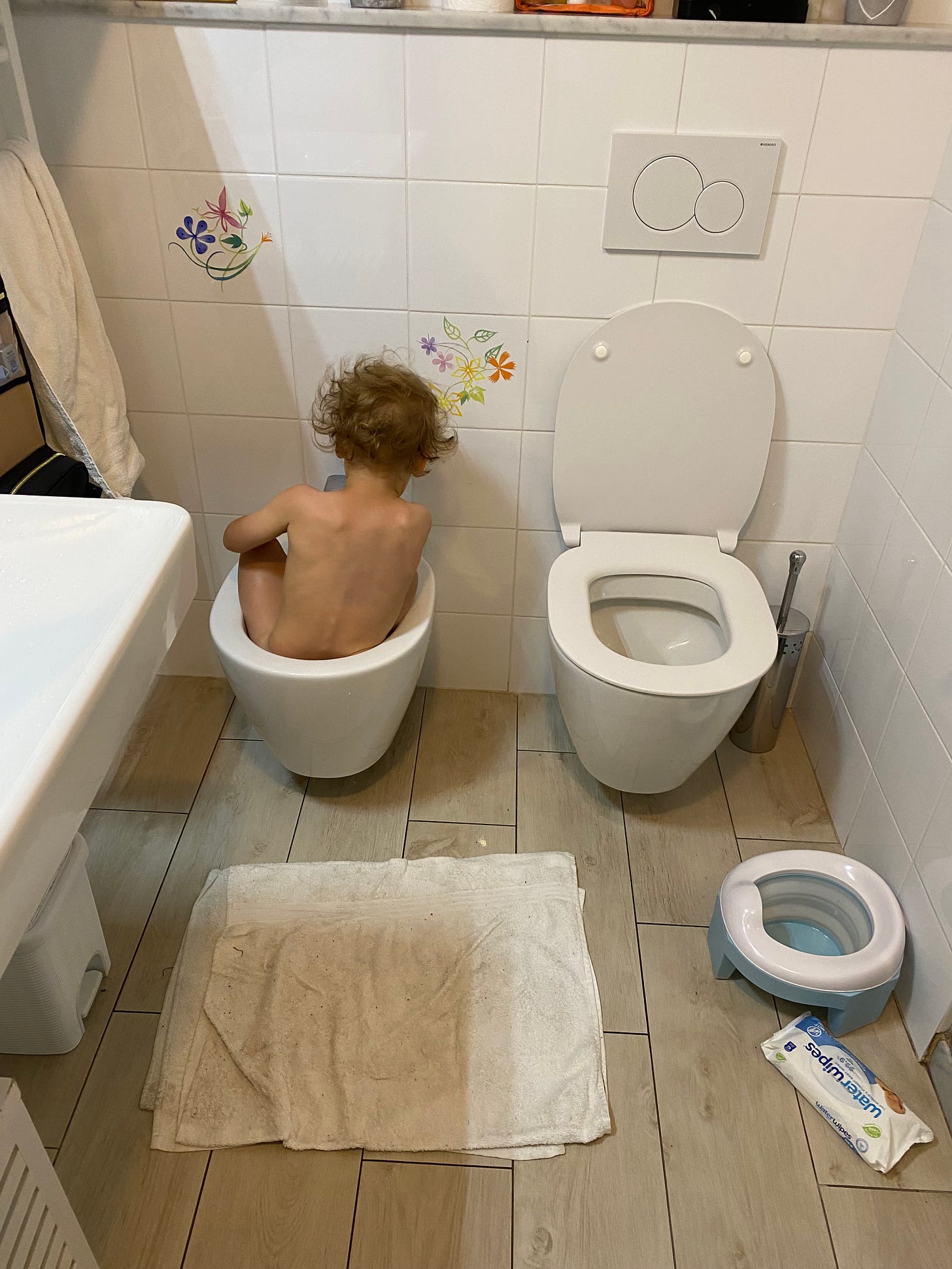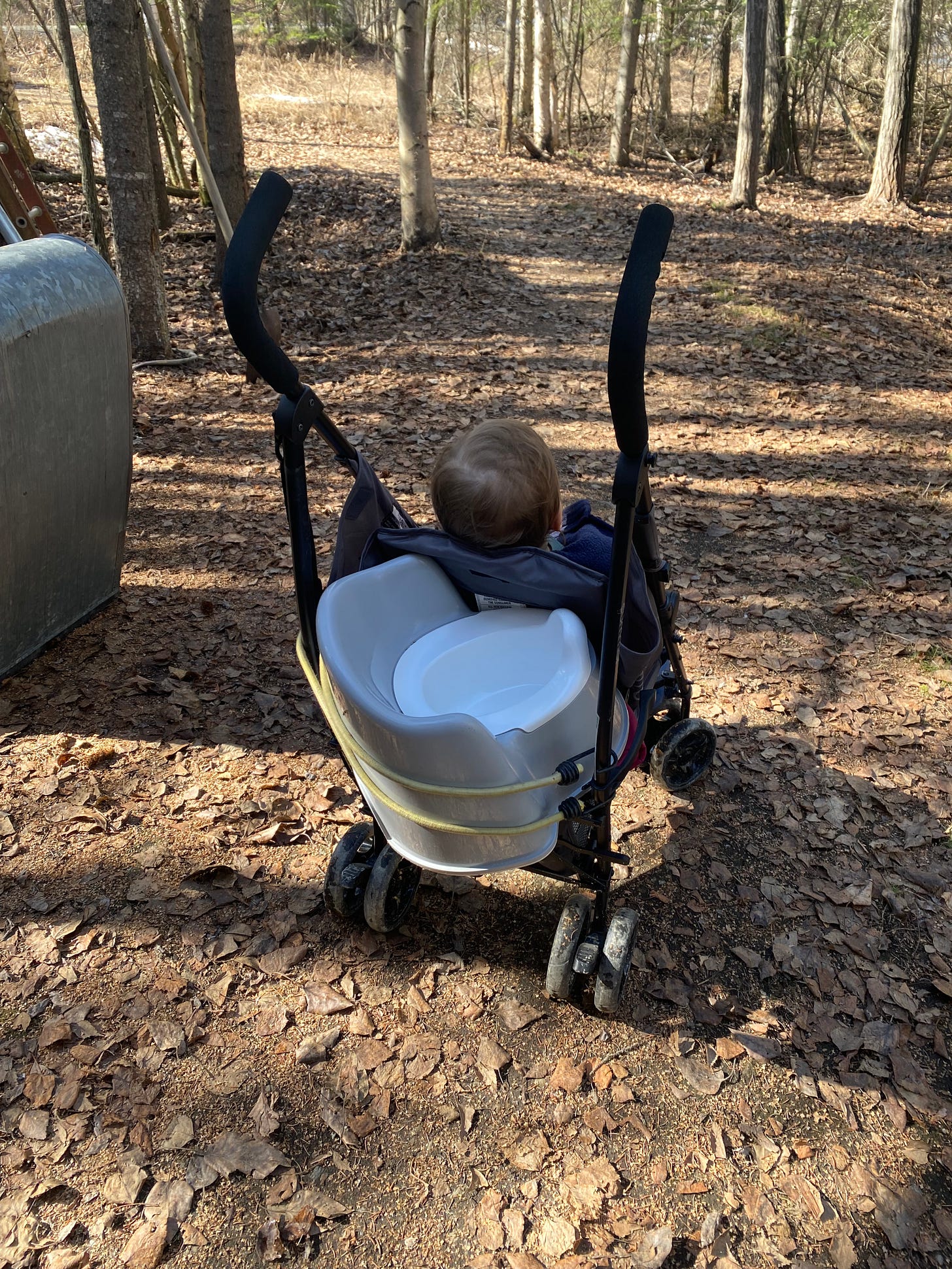I have been working with toddlers for about 12 years now and in that time span I have helped many of them learn to use the toilet. I have gathered together my top ten toileting tips below!
Start early - whenever you choose to begin this process with your child, is the right time. Don’t worry about what the internet or your friends are saying about the age to begin. If you’re reading this with an infant and wondering what’s on the horizon in terms of toilet learning though, then I would say, the earlier the better. As soon as children can walk you can introduce a small potty into their diaper changing/self-care routine. It is all about practice, modeling, and using language that helps prepare them for the toilet learning process down the road. My favorite age to begin is between the ages of 12-18 months, before the Age of Opposition when their will is rapidly developing.
Prepare the space - prepare your home to welcome this upcoming change. Have a small potty, or a toilet insert with a tall enough stool, or a shelf or bar they can hold onto at their height so you can begin changing their diaper and pants standing up. It is a good idea to keep their little feet flat on the ground or a stool when they use the toilet so they can be comfortable. Have everything you might need close at hand - a basket with clean underwear or pull-up’s, wipes and a place for soiled clothing nearby, a few special books to hold their attention while sitting and trying. If everything that is necessary in the process has a space and is used in a routine manner, your child will begin to internalize the process and soon be able to collaborate more regularly.
Prepare yourself - this might be one of the most important pieces (in addition to language) of this process. Our adult brains do not like the mess and inconvenience that comes with learning to use the toilet. Infants and toddlers are learning so much foundational knowledge during these early years. Walking takes months to develop and refine, as does language and eating with utensils. These skills include mishaps, babbled words, messy tables, food on the floor, and frequent falling down. We often show much excitement around the learning process as well as the final results - it’s all very sweet. Pee and poop are a different story - and yet it is very much the exact same idea. Learning to use the toilet requires a period of imperfection in order to master it and this might be days or months depending on the child.
Focus on the process, not the results - if you are only focused on the results (getting pee and poop into the toilet) you are not focusing on all the little pieces that make up the journey of developing true bathroom and body awareness. Yes, we ultimately want to communicate that what our body produces goes into a special place and is flushed away. But putting undue focus and pressure on those results often leads to children withholding, power struggles, and much frustration down the road.
Do it WITH your child, not TO them - from birth the process of self-care is one that we do with our child, not to them. It’s a time we can spend connecting, communicating our actions, and bonding with them. When a potty is introduced and the mechanisms of the self-care routine change, these psychological aspects remain the same. We offer them opportunities to try going to the bathroom in a new way, we entice them creatively and nudge them in this new direction. We’re not entertaining them for hours to try and put pee in the toilet nor are we demanding they sit and try.
Use language as a resource - the way you speak to your child and about them matters. The words we use for parts of our body and the self-care routine matter. In an effort to teach children to be safe with their body, they need to know the correct words for their body parts so they can communicate clearly to you throughout this learning process and also to others later in life. Using language creatively also helps make this process fun and stress-free with toddlers especially. Giving them two choices helps them feel in control over a process that often feels very much out of their control. Finding creative ways to tune in to their specific interests also helps make the process enjoyable.
“You love bears, do you want to crawl like a bear or hop like a rabbit into the bathroom?”
“You’re really into listening for sounds lately, let’s listen to see if your pee makes a sound when it falls into the toilet”
“Should we make the sound of a truck all the way into the bathroom and then park our butt on the toilet seat?”
Consistency is key - practice equals progress, and learning to use the toilet is no different. Life often gets in the way of being consistent and that’s OK - you want to find ways to keep the important things consistent while letting the rest go. At home, having a consistent but simple routine in place can help your child adapt and the routine itself communicates to them what is happening and what comes next. Being inconsistent will not ruin the process, and it’s also good to practice flexibility, but if you are constantly switching between diapers and underwear your child will have a much harder time understanding what is expected of them.
Focus on daytime first - staying dry overnight or even during naps comes later in the process. Sleep is important and we want to prioritize that during these early years. If you notice your child is waking up dry for 10+ days after their nap you can switch to underwear. Toilet learning is not a straight line and you may find that there are misses down the road if your child is sick or sleeping more deeply one day - but that’s OK and bed pads can be a helpful resource. Night time sleep is the same - if you notice they are able to stay dry for a certain time then you can try switching overnight too. Typically that happens down the road at 4,5,6 years old depending on the child. The amount of liquid they drink before sleep does have an impact on their ability to go longer without urinating.
Embrace toilet learning on-the-go - don’t fear using the public restroom with your child. They will need to learn at some point and it is always good to model going when you’re out and about. In the warmer months going to the bathroom outside can also be taught but you will need to figure out what you are comfortable with yourself. When you begin teaching your child to use the toilet you may decide to stay home for a stretch of time to remain consistent but eventually you will need to leave the house. Have a plan in place. You can get a foldable toilet seat insert for travel, you can cover their underwear with a pull-up or use puppy pads in the car seat - there are options!!
Make it fun - as with anything in parenting, this is one more area to practice the art of letting go. There will be missed attempts at using the toilet, there will be moments of frustration, there will be more laundry, there will be poop on the floor. If you can go into this stage with the expectation that it won’t be perfect, you’ll come out on the other side less battered. Make this as fun as you can - sing about where the pee and poop goes, sing about what your child is doing while they sit and try, hop or jump into the bathroom with them, ask them to show their favorite stuffed animal how to use the toilet, tell them a engaging story of how food is digested! Your child can do this and will get there - even if you’re in the thick of it!!







Thank you! I’ve been wanting to start this with my son. Right now I just narrate everything I’m doing when he follows me into the bathroom. 😆 Is there a potty that you recommend?